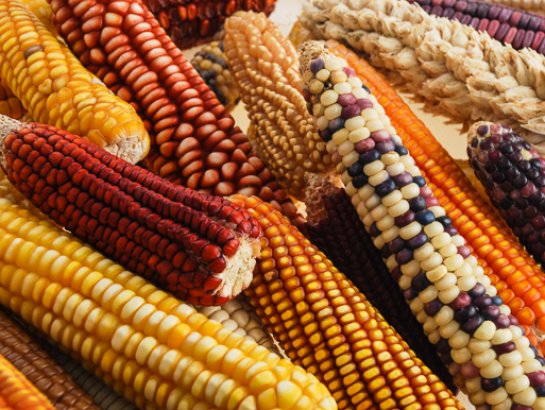A study published in The Journal of Nutrition shows that maize that has been conventionally bred to have higher zinc content can provide enough zinc for a growing child in her formative years. This is an important finding because zinc deficiency can result in stunting and inability to fight common infections. Children are especially at risk of zinc deficiency as they need a lot of zinc to grow. Globally, more than 17 percent of the world’s population is at risk of zinc deficiency.
In The Journal of Nutrition study, young Zambian children between the ages of one and four ate three meals consisting of whole-grain zinc-biofortified maize flour or conventional whole-grain white maize flour with or without additional zinc. The meals were traditional maize porridges (nshima) along with relishes consisting of cabbage, onion, tomato, salt and oil. The researchers found that the quantity of zinc absorbed by these children from the biofortified maize was significantly greater as compared with children who ate meals made of non-biofortified maize (control). In fact, the zinc absorbed by these children was higher than the physiological zinc requirements for this age group as estimated by the Institute of Medicine, suggesting that zinc status in young rural children can be improved through their major food staple.
A secondary objective of the study was to compare the quantity of zinc absorbed from zinc-biofortified maize with that from control maize even when the flour was fortified to a higher level of zinc than biofortified maize. Results from this study showed that zinc absorbed from biofortified maize was double the amount absorbed from post-harvest fortified maize flour. The study also highlights the importance of minimizing zinc losses from maize kernels during milling, by using closed hammer or roller mills.
This study shows that maize can be bred to provide additional dietary zinc in regions where zinc deficiency is a problem and maize is an important staple food. HarvestPlus, a global program that seeks to improve nutrition, and its partners have already conventionally bred and released maize that is rich in vitamin A, another critical nutrient lacking in people’s diets especially in Africa south of the Sahara. The zinc-rich and control maize were provided by the International Maize and Wheat Improvement Center in Mexico (CIMMYT) and the HarvestPlus team in Zambia, respectively.
